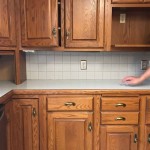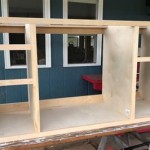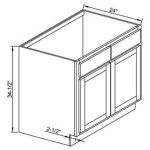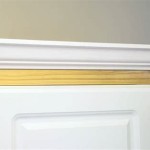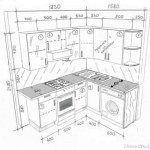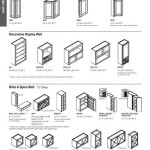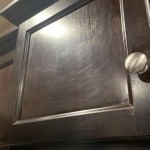Kitchen Cupboard Door Trim: Enhancing Aesthetics and Functionality
Kitchen cupboard door trim, also known as edging or molding, plays a crucial role in enhancing both the aesthetics and functionality of kitchen cabinetry. It adds a finishing touch to the doors, creating a polished and cohesive look while protecting the edges from wear and tear. With a wide variety of materials, styles, and finishes available, kitchen cupboard door trim provides endless possibilities for customization and personalization. This article will delve into the various aspects of kitchen cupboard door trim, offering insights into its significance and considerations for selection.
Types of Kitchen Cupboard Door Trim
There are numerous types of trim available, each offering unique aesthetic and functional benefits. Some of the most common types include:
- Edge banding: This thin strip of material, typically made from wood or plastic, is applied to the edges of doors and drawer fronts to protect them from damage and provide a finished look. Edge banding comes in various colors and finishes to match or complement the cabinet material.
- Molding: Molding is decorative trim that adds a visual element to the doors and frames. It can be applied to the edges, corners, or even the center of the door. Molding is available in a wide range of traditional and modern styles, from simple flat profiles to ornate designs.
- Beadboard: Beadboard trim features a series of raised vertical lines, creating a classic and elegant look. It is often used to accentuate the doors and add visual interest.
- Crown molding: Crown molding is a decorative trim that is applied to the top of the cabinet doors and frames, creating a seamless transition between the cabinets and the ceiling. It adds a touch of sophistication and formality to the kitchen.
- Base molding: Base molding is similar to crown molding but is applied to the bottom of the cabinets. It provides a clean finish and protects the cabinet base from scratches and dents.
Benefits of Using Kitchen Cupboard Door Trim
Kitchen cupboard door trim offers numerous benefits that enhance both the aesthetics and functionality of the kitchen:
- Enhanced Aesthetics: Trim adds a visual appeal to the cabinets, enhancing their overall appearance. It provides a polished and finished look, creating a cohesive and elegant design.
- Protection: Trim helps protect the edges of the cabinet doors from wear and tear. Edge banding prevents chipping and scratches, while molding can shield the corners from impacts.
- Customization: The wide variety of materials, styles, and finishes available for trim allows homeowners to personalize their kitchen cabinets to match their individual preferences and style.
- Improved Functionality: Some types of trim, like edge banding, can help create a cleaner and smoother surface, making the doors easier to open and close.
- Increased Value: The addition of trim can increase the perceived value of the kitchen and the overall home.
Considerations for Choosing Kitchen Cupboard Door Trim
When selecting kitchen cupboard door trim, several factors need to be considered:
- Cabinet Material: The type of material used for the cabinets will influence the best choice of trim. For example, wood cabinets often pair well with wood trim, while laminate cabinets might benefit from plastic or vinyl trim.
- Kitchen Style: The overall style of the kitchen should guide the choice of trim. Modern kitchens might benefit from sleek, minimalist trim, while traditional kitchens may embrace ornate molding.
- Personal Preference: Ultimately, the choice of trim should reflect the homeowner's personal taste and preferences. Consider the desired level of detail and the overall aesthetic you want to achieve.
- Budget: Trim materials vary in cost, so consider your budget when making your selection. Some materials, like wood, can be more expensive than others.
- Installation: The complexity of the trim installation should also be taken into account. Some trim types, such as edge banding, are easy to install, while others, like crown molding, may require professional assistance.
By carefully considering these factors, homeowners can select kitchen cupboard door trim that enhances the beauty and functionality of their kitchen while aligning with their personal style and budget.

Add Moulding To Flat Cabinet Doors Home Kitchens Cabinets Kitchen

Adding Molding To Old Cabinets Diy Tutorial Kitchen Cabinet Doors

Plain White Melamine Kitchen Goes Coastal Renovation Door Trims Makeover

From Drab To Fab Adding Trim Cabinets
Easy And Inexpensive Cabinet Updates Adding Trim To Cabinets Drawers The Rozy Home

Adding Moldings To Your Kitchen Cabinets Remodelando La Casa

Add Some Molding And New Fixtures To Update Those Boring Flat Cabinets Kitchen Cabinet Doors Cottage White

Easy And Inexpensive Cabinet Updates Adding Trim To Cabinets Drawers The Rozy Home

10 Types Of Kitchen Cabinet Molding For Your Home

From Drab To Fab Adding Trim Cabinets
Related Posts

